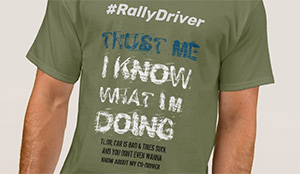Behold, Citroën’s new rally weapon, the C3 WRC

Since they first appeared in 1997, World Rally Cars have regularly undergone changes to their definition, whether in order to manage performance or control costs. The most significant changes were made ahead of the 2011 season, with more compact models with 1.6-litre direct injection turbo engines. The 2017 season sees the introduction of a new generation of cars, designed to be the fastest and most spectacular ever seen on the stages of the World Championship!
In all areas, the Citroën C3 WRC has pushed back the boundaries of what has been done in the past. For example, the weight-to-power ratio of the Citroën Racing engineers’ latest creation is 3.1kg/bhp, compared with 3.8 for its predecessor. Since improved efficiency is not only a matter of figures, the dramatic technological changes can also be seen in the wider wings, the substantial aerodynamic features and the four-wheel drive that now comes with a centrally-controlled differential.
One objective: the 2017 Rallye Monte-Carlo
In the design office, evaluation of the new regulations and the structural design of the New Citroën C3 began in April 2015. This work was stepped up and specified once the programme was given the goahead by senior management at the PSA Group. On 19 November 2015, when the sporting future of Citroën was announced, the C3 WRC already existed… virtually speaking, at least, on the CAD workstations.
Very quickly, work began on building the first prototype in the nearby workshops. On 11 April 2016, Kris Meeke drove the car on its first outing at the Versailles-Satory track.
Shortly afterwards, the team set off for the south of France, where the first test session was held on the gravel roads around Château Lastours. The car was decorated with a special “camouflage” livery, designed to hide the styling features of the New Citroën C3, which had yet to be unveiled at that point. Development work continued on a variety of surfaces, with around four to five days of testing each month, as the team looked for both reliability and performance. At the end of June, a key stage was reached with the delivery of a second car, dedicated to tarmac testing.
Behind the scenes, work in the design office continued, introducing new upgrades. Several wind tunnel sessions were also held, before the shape of the bodywork was finalised.
Confirmed as works driver for Citroën Racing until 2018, Kris Meeke conducted the majority of the testing. In each session, his work was corroborated by Craig Breen and Stéphane Lefebvre, who took over driving duties from the Northern Irishman on the final day of the tests.
Altogether, the Citroën C3 WRC completed ten test sessions and a total of 9,500 kilometres.
source: Citroen Racing



